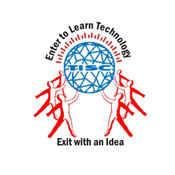HEALTH CARE
Health Interventions
Childhood nutrition: Due to lack of nutritious food in the childhood and affecting for the anemia and Vitamin A deficiency. To curb this problem creating more awareness among the parents and growth monitoring is observing conducting every month. During the growth monitoring, the parents are being explained their child’s growth in the charts and suggesting to make additional nutritious food if they fall under malnutrition. By a constant effort of this process, the malnutrition children were reduced, and increased awareness among the parents also.
Care and support for pregnant and lactating women:
Immunization for children: Immunization is very essential for the child to avoid the diseases like Polio, DPT, Hepatitis – B, Measles, and Vitamin A to be given in appropriate time implementing the same person as well as mingling with other stakeholders like ICDS staff and health staff of ANM and AASHA worker, etc. in the UIP days.
Reproductive health services- Prevention of STI/RTI, HIV/AIDS: HIV/AIDS is a major challenge for health promotion interventions. To prevent this problem the most vulnerable of STI/RTI are being referred to the hospitals for treatment. Conducting awareness meetings on HIV/AIDS and also counseling through home visits to the needy persons.
Personal hygiene and practices: Personal hygiene is very vital in health issues. More inflectional diseases are caused due to a lack of personal hygiene and practices. Though medical care is provided for the diseases it is needed to identify the prevention methods. Personal hygiene is one of the prevention methods of any inflectional diseases. Through home visits, the importance of personal hygiene was explaining and changing the practices of the people.
Reach
|
Children
Best Practices
- Accessing 100% of children for immunization in our target area.
- Increased awareness among the parents on birth registration.
- Increased institutional deliveries in the community.
- Increased exclusive breastfeeding.
- Benefited the health services from health camps by both women and children in various camps.
- People accessed with the usage of toilets.
- Increased awareness of personal hygiene practices.
Sponsorship Program
The main object of this program is to as loss of parents or economically weakened families the children deprived of opportunities and their Rights, consequently, become the victims of exploitation. Under this program, the children were joined in the schools and continuing their education without any interruption till completion of his/her 10th class now. It does not mean to stop the education with the 10th class but still hopes some other generous donors can support to complete their higher education too.
A total of 250 children was selected and enrolled in the schools of various places of 2 districts. The children are at different stages from 1st class to 10th class. All the children are well active.
Children Sponsorship Program
The main object of this program is to as loss of parents or economically weakened families the children deprived of opportunities and their Rights, consequently, become the victims of exploitation. Under this program, the children were joined in the schools and continuing their education without any interruption till completion of his/her 10th class now. It does not mean to stop the education with the 10th class but still hopes some other generous donors can support to complete their higher education too.
A total of 250 children was selected and enrolled in the schools of various places of 2 districts. The children are at different stages from 1st class to 10th class. All the children are well active.
Health, HIV/AIDS and Nutrition
TISC had addressed the health issues from prevention, care, and treatment with a focus on HIV/AIDS, Tuberculosis, Malaria, sexual reproductive health, hygiene, water, and sanitation. Nutrition awareness, counseling, and demonstrations were part of the programs. Sustainable health interventions with community participation were cross-cutting strategies practiced in all interventions. Gender and accessing the services were a priority of the programs.
